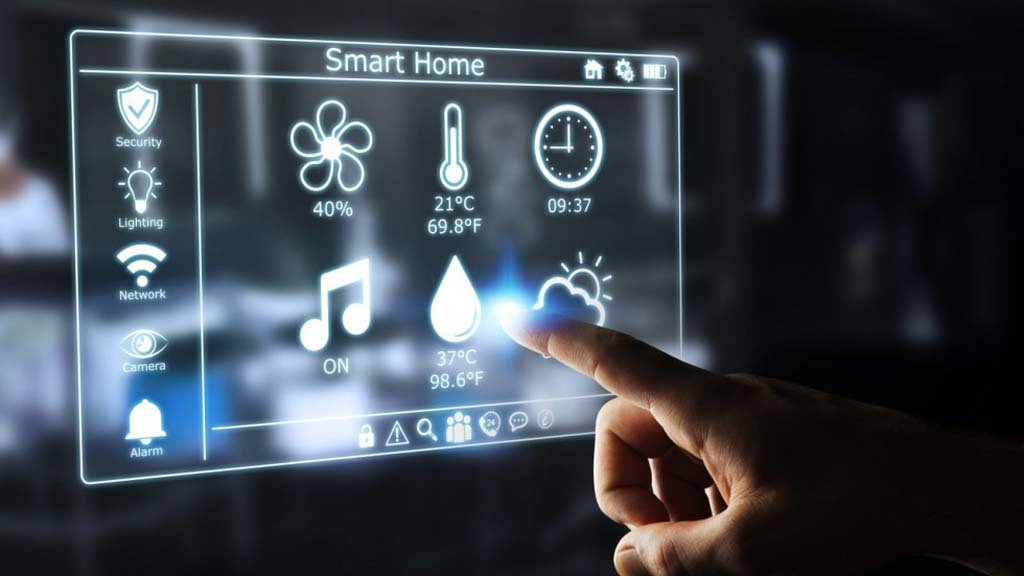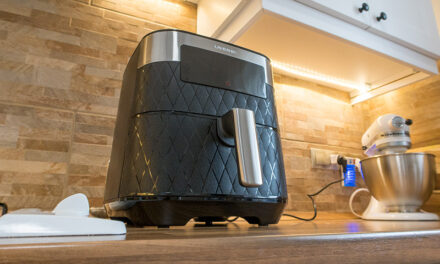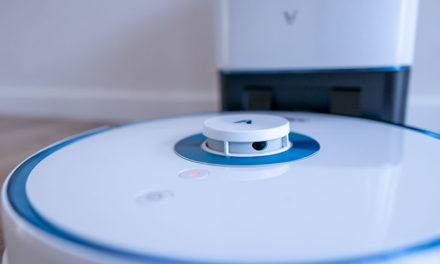
Smart home foundation Xiaomi system construction

Read this first and we promise that in the next article the construction of the smart home will start as well!

Nowadays, the Danube can be blocked with smart home systems. The good thing about this is that the prices have been broken down enough, and the bad thing is that we can easily run into a dead end by choosing products from a manufacturer that disappears from the market in 1-2 years, and we are left with a complete system that is not or only very difficult to develop. .
Xiaomi seems to be a good choice in this regard, as the Chinese manufacturer is in a period of abundance that, if it continues at the level of recent years, it will not disappear but will sweep the markets everywhere from America to Australia.
In this article, we briefly summarize what a smart home means, what are the benefits of building one, and what tasks most people use them for. But on the other hand, you can also read a little about the technologies that run smart homes, as a kind of foundation, so that if you see words like Zigbee, you don’t have to blink butanely.
contents show
Introductory, or what is a smart home
Smart homes are not modern inventions. In the old days, such systems existed decades ago, though, they were quite far from what we call smart homes today. The theme, formerly known as building automation, produced some automation with plenty of relays, infrared remote controls and sensors. Compared to these, today's systems show little improvement for the outside observer, at least in terms of operation, as they turn on the lights, move the shutters, set the air conditioning, turn on the alarm if an unauthorized person enters the room or, for example, a fire breaks out. Although the operation has not changed much in this way, the technology behind it has been completely replaced.

Let’s start there with the fact that building a smart home today will be part of a regiment of an old system. This is not only due to the fact that the devices themselves have become cheaper, but also because, due to the development of technology, essentially all components are able to operate without an external power supply and even without any wiring. Because of this, the construction was extremely simplified and, of course, cheap. In today’s wireless systems, designing logistics connections between devices is a much bigger challenge than setting up a physical network.
I find it important to note that many professional systems still build power, which is even more complicated than a traditional 220 system in that we work here with a low voltage of 5 volts, which requires 220 (more precisely 230) alternating current 5 was converted to direct current. In this case, we can work with one converter per room or apartment, or we can perform the conversion for every element in the smart home system. The latter solution is expedient where, for example, conventional switches are replaced by smart switches, because the wiring of the 220 is already given.
What do we use smart home systems for?
By the end of the article, you will hopefully see that the design of smart home ecosystems in terms of logistics relationships, that is, one component of a smart home that responds to another component, is limited only by our imagination or, in the worst case, by the software solution behind the hardware used. The fields of application are so wide that we would not even think.
What do most people use smart home systems for? Of course, there are surveys in this area as well, so we know for sure that the majority of people use such systems primarily for security tasks. This is not surprising, as you may have read, as you may have read above, the solutions used today are wireless, and do not even require power for the Xiaomi and many other systems. For this reason, we can build complete systems in a matter of seconds and very cheaply, which also include door and window opening sensors, motion sensors and cameras. The latter, of course, requires a power supply, the reason for which you can read in the technology details.

These home systems we build differ in one thing from a traditional remote monitoring right now, in that a patrol team is on standby at the latter, and they move out to the property in the event of an alarm. In our case, however, we can monitor the apartment live via cameras, and we can even record events in the apartment manually or automatically. The system can send an alarm to our phone in real time, without delay, so we can alert the police or, if enough, the neighbor.
The second most common area is temperature control and related shielding functions. The third is lighting control and the fourth is multimedia.
My own experience shows that most people smell lighting with smart home technology, which is simply because smartphones are cheap, they don’t require any other device to use on their phone or the software running on it.
Technology basics
In this chapter, we discuss the technologies, specifically wireless technologies, that are needed to build a modern smart home. I think it's important to say a few words about these, but if you, dear reader, aren't curious, you can skip this, because for Xiaomi systems, for example, it's enough to be aware of the software settings, you don't need to understand the technology. However, if you’re a little technical-minded, continue the article with the next paragraph.
Wireless technologies
I remember in the early 2000s, when the first WiFi devices appeared at an affordable price, it took serious preparation and experience to put together a well-functioning system. Bandwidth was tight and signal strength was ridiculously weak. Of course, now we are talking about home devices, the first routers, APs. In addition to Wifi, a second wireless technology, Bluetooth, later emerged. The two technologies had wireless in common, but the area of use differed significantly due to the technology. While in the former case we provided the connection between the computer networks and our devices, in the latter, for example, we created the possibility of data transfer between our mobile device and the computer.
Since then, both Bluetooth and WiFi, i.e. devices based on the IEEE 802.11 standard family, have evolved. The former has been able to handle more connections in parallel with more bandwidth, and the latter offers more and more bandwidth, now, thanks to multi-antenna systems, taking advantage of the possibilities offered by reflected signals.

However, these two methods, standards, or methods have not become suitable for building a wireless smart home system with their help. There is nothing wrong with low bandwidth or slow connection. The three main problems are the design of the network topology, the proper allocation of network resources, and the problem of power supply.
Bluetooth has remained a PAN connection that allows us to establish a private connection and, for example, stream audio from our phone to our headphones, while WiFi is still a device for creating computer networks. Smart home devices work in fundamentally different ways, they have different expectations when it comes to data connectivity.

We have two important expectations for smart homes. One is to be able to organize as many devices as possible into one network, the other is to keep energy consumption to a minimum. The first condition is not met for Bluetooth and the second condition for WiFi, so these procedures can be discarded in most cases. I write that in most cases because, as you can see, WiFi will have a raison d’être in certain areas.
So it was necessary to create a standard that provides wireless connectivity, handles many devices, and low power consumption. There are currently two procedures available for this, Z-Wave and Zigbee. We get to know the latter because we encounter this with the Xiaomi system.
Zigbee technology
Zigbee technology is being developed by 35 companies, big names like Motorola, Honeywell or Philips, who are working together to develop the technology in an organization called the Zigbee Alliance.

Based on the above, Zigbee technology is a technology that allows many components to be connected, where high bandwidth is far less important than getting the components to power with as little energy as possible. Like WiFi, Zigbee has been standardized, and the finished standard has been marked 802.15.4.
Zigbee networks, like traditional WiFi, use the 2,4 GHz band for communication, but the similarity here ends pretty much between the two standards. For example, in the case of WiFi, we create a centralized network where the bandwidth of the router is shared among the devices connected to it. Zigbee, on the other hand, creates a mesh network arranged in a star topology, within which we can even establish virtual peer-to-peer connections between network nodes. You simply have to think of a mesh network as a WiFi to which the more devices you connect the stronger it will be. In the case of mesh, the devices do not share the available bandwidth, on the contrary, essentially all devices connected to the network further amplify the signal. A maximum of 255 network nodes can be built around the central unit in the Zigbee network. This central unit is called a gateway among Xiaomi devices.
The huge downside to Zigbee over WiFi would be the bandwidth that would be required for Zigbee. Fortunately, there is no, because smart homes do not require a permanent connection between the elements of the system, or at least no data flows continuously on the network, and the data packets are also small.

On the Zigbee network, two typical devices can be distinguished in terms of network traffic. One is units that operate at irregular intervals, such as switches, which only establish a connection with the central unit when they need to send a pulse. The other important group is the devices that handle periodic traffic, typically the various sensors that the control panel interrogates.
Of course, there is also a third group, which of course is not a group as it contains only the central unit. This is the soul of the network. This unit must have a constant power supply and adequate computing capacity to handle the entire network, up to 255 network nodes and the data they transmit, and the appropriate AES encryption.
WiFi devices
For Xiaomi, and of course other smart home systems, we also find devices that use a traditional WiFi connection. These central units, the Gateway, which also reaches our computer network, the router, need to be accessed - why about that a little later - and the devices that need a continuous power supply anyway, such as luminaires. In the case of the latter, since the power supply is continuous WiFi is the simpler and cheaper solution, and for the former it is important that the traffic to the router also requires high bandwidth due to the built-in Internet radio, for example.

In the case of a central unit, bandwidth is also particularly important because, by default, all of our smart devices communicate with our phone through Xiaomi’s cloud service. Thanks to this, we can access the smart devices of homes remotely, turn the air conditioner on or off, start the robotic vacuum cleaner, or even turn on the lights during the holidays to make us feel like we are at home.
Let's summarize the technology!
The Xiaomi smart home ecosystem is made up of two parts. From the star topology, Zigbee, which creates a mesh network, and the traditional WiFi network. The former devices operate without wires and external power supply, the power supply is provided by a button cell battery, which in average use can last for half or even two years without replacement. The latter require uninterruptible power supply from the 220 network like an average WiFi device.
Central to the network is the Gateway, which also has WiFi and Zigbee connections. This communicates with switches and sensors on the Zigbee, for example, and with luminaires and smart connectors on WiFi networks, for example. Between devices, be they Zigbee or WiFi devices, even virtual peer to peer connections can be established.
Examples of how smart home devices work
Although I will keep the real practical examples for the following parts of the series, I will quote you some examples here.
Those who are new to smart home technology are the first to buy WiFi devices for the first time. This is because they do not require a central unit to use them, a phone using the Xiaomi smart home is enough. Perhaps surprising, but quite serious systems can be built with these as well. Smart lights and smart connectors, such as air conditioning control, work on WiFi, but also the infrared unit, with which essentially all traditional infrared controllable devices can be integrated into the smart home system.
Those who are happy with these tools will almost certainly later expand their system with Zigbee tools. These can be used to directly switch on luminaires or control security cameras, for example.

As you may have read above, you can create peer to peer connections between Zigbee, but even between devices sitting on Zigbee and WiFi networks. In practice, this means, for example, that the connection between the window opening sensor and the air purifier can be set to stop the air purifier when the window is opened. In addition, of course, the other set functions of the window opening sensor are retained, such as those related to the security system. You can start recording the security camera, send an alarm to your phone.
There are also a lot of functions that can be set for smart lights. They can respond to music in the room, turn it on automatically when we need to get up in the morning, or change its brightness when a call comes in to our phone. In the same way, it will no longer be a problem to call us while watching TV, as the TV will automatically mute when a call comes in.
The air conditioning turns off when we open the window, or turns on in the summer when we leave home from our workplace, so by the time we get home we will be greeted by a pleasant climate.
These features may seem complicated, but by the end of the series you will see that we can build the system almost pennies, step by step, so that it will not burden our wallets either. Perhaps it is not irrelevant that a complete, well-functioning smart home system can throw a lot at the price of our home, but at least it makes it easier to sell. So the point is, we get a more comfortable, livable, and valuable home with little investment.
In our next article, we got to know the Xiaomi Gateway as a basic element of the system. If you don't want to wait until then, read our article on the smart vacuum cleaner, smart lights and desktop smart light that can be integrated into the system, and first the first piece of our smart home series, The Favorite!
Sweep, vacuum and even wash the Xiaomi Roborock S50 robotic vacuum cleaner
We also tried this - Xiaomi Philips Eyecare desktop smart light
Let's shine with wisdom - Xiaomi Yeelight test with a lot of secret information!















